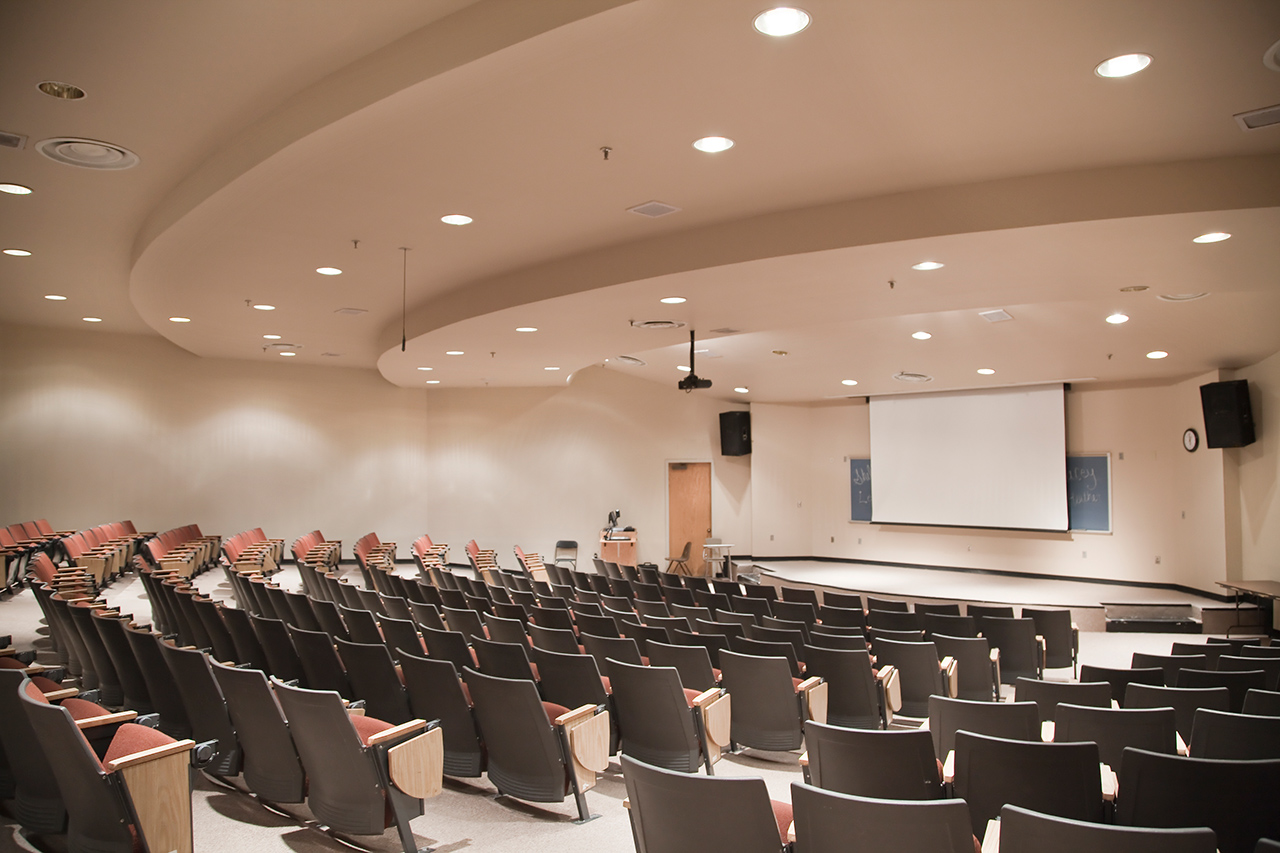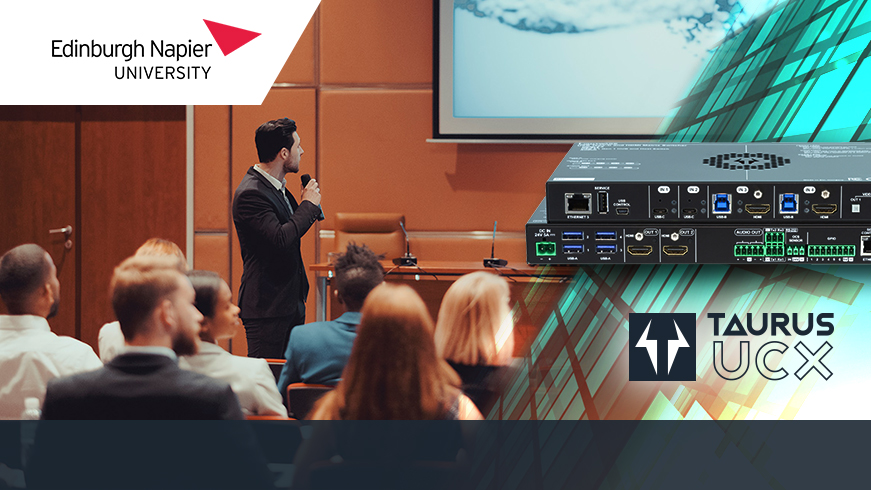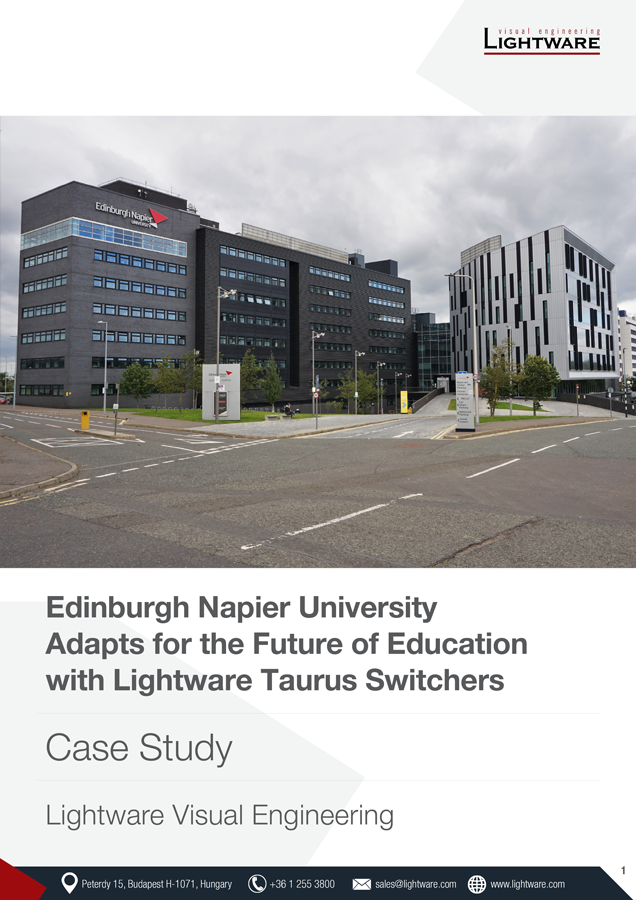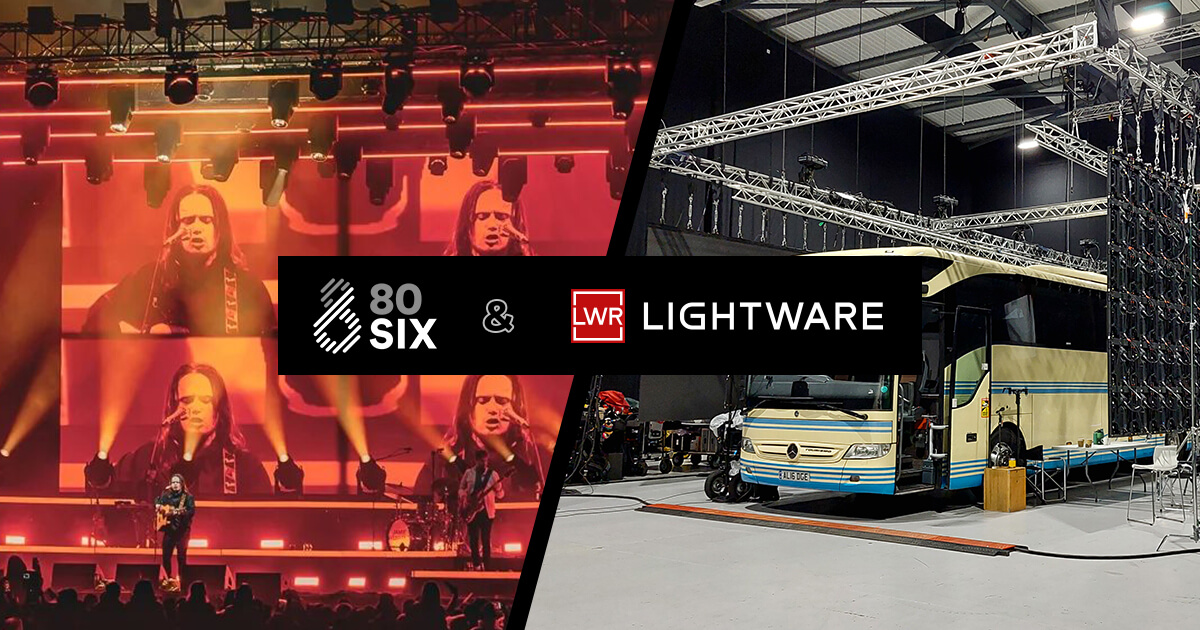Classrooms at all levels are growing more interactive and connected, with a focus on active learning and Bring Your Own Device (BYOD) environments to increase collaboration and interactivity between students and faculty. This shift had been broadening over the past several years but was accelerated by the pandemic, which highlighted the importance of technology in the learning experience. At the same time, another COVID-induced dynamic has been the need for greater flexibility, as universities adopt the same remote and hybrid models in place at organisations in every industry.
Edinburgh Napier University has three campuses in Edinburgh, Scotland, offering advanced facilities for learning, teaching and research. The university’s AV teams manage several classrooms, learning and meeting spaces, each equipped with AV technology. Additionally, over the past two years, the school has pivoted to a hybrid teaching model, accommodating the need for social distancing and for students and faculty who log-in from remote locations or travel to and from campus often.
When the pandemic started, everyone on our staff began working from home, and our class schedule shifted to fully remote, said Ben Taylor, Head of AV for Edinburgh Napier University.
Taylor and his team provide technical support for the faculty and staff in many Napier departments. Now that the university is getting back to pre-pandemic operations, there’s also an increasing demand for technology-focused spaces with remote access. The team is providing every university staff member with a laptop and a single-cable USB connection to increase the availability and use of all rooms and peripherals.

To make connectivity to these spaces easier, they are installing Lightware’s Taurus UCX switchers in more than 40 rooms across the campus.
Lightware’s Taurus UCX is an in-room UC media management node enabling the connection of up to four devices (PC, Mac, video room system, etc.), using two USB-C ports and two mixed (USB/HDMI) ports. Faculty, students and guests can simply connect their device using a single USB-C cable combining video, audio, control and Ethernet signals, and then begin sharing or presenting content.
It’s really ‘utopia’ for faculty members and it gives our lecturers and students the benefits and flexibility of ‘plug and play’ BYOD capabilities,” Taylor said. “The quality is amazing and the interface is user friendly.”
Each classroom is receiving an AV set-up including cameras, audio, microphones and projector screens, all compatible with the Lightware switchers. The installation’s first phase began in July 2021, with 34 classrooms completed in time for the first trimester in September. An additional six rooms are planned for completion by the end of December.
That timeframe is challenging enough but any installation must be completed when the rooms are dark to not disrupt any class schedules. “There’s no daytime access so evenings are our only option,” Taylor said.
An added complication has been supply-chain issues that delayed the arrival of several key components from other manufacturers necessary to realize the full benefits of the Lightware switchers. That includes audio devices and a touch-panel device that “sets the tone for each room and is a key teaching aspect people interact with,” Taylor said. “If I’ve not got that, then the rooms aren’t going to work.”
The university is working with Scotland-based system integrator Streamtec which is providing installation support and technology consulting, as well as helping to develop work-arounds to manage the product shortages.
With our timetable and our heavy demands on space, there aren’t many alternate options for moving people around,” Tayor said. “So we’ve had to come up with contingency setups. But from the user perspective, it makes no difference what technology is being used. It simply has to work. “Even with the patchwork approach, the Lightware switchers still perform as expected and provide the convenience and flexibility the Napier community needs, a testament to their design,” Taylor added.
During the initial Lightware installation, the Napier team ran into a few basic set-up issues, such as needing to add an extra input for connections between the in-room cameras and the switcher’s USB ports. These issues were resolved easily by collaborating with the Lightware product team, further evidence of the switchers’ flexibility and the swift solutions-focused efforts from the team.
The Lightware switchers give the university enough scalability if their tech-nology needs change or expand. For devices with limited HDMI inputs, a Lightware switch can add multiple inputs and formats such as Display Port, DVI, VGA and USB-C, expanding the functionality with no need for various dongles. Lightware’s open API architecture makes it possible for every data to be openly available for higher-level management, monitoring and control applications.

The Lightware switchers have made Taylor’s job easier, in terms of adapting the classroom technology to match the skill levels of different user groups at the university.
Depending on the program, the student demographic is different with varying levels of technology savviness,” Taylor said. “For example, in our sciences, health and social care buildings, the technical skills are at times lower they are in our communications or creative programs. So the support requirements are quite different. But regardless of the user audience, the Lightware switchers help us present a ‘one size fits all’ solution, userfriendly and simple for any cohort.
Looking ahead, Taylor expects the university to increase its complement of Lightware technologies at several areas across the campus, including a new computer center currently under construction.
“It will be a massive 24/7 facility with AV over IP encoders, about 400 workstations and teaching spaces,” Taylor said.
For now, the switchers are helping the university reimagine learning as an immersive and flexible experience, meeting students and faculty where they are, and wherever learning needs to occur.
Through a single cable into the Lightware switcher, people can get on our physical network, access other peripherals and devices in the room, join a Zoom or Teams meeting and get their content on a screen,” said Taylor. “It even charges their laptops!




